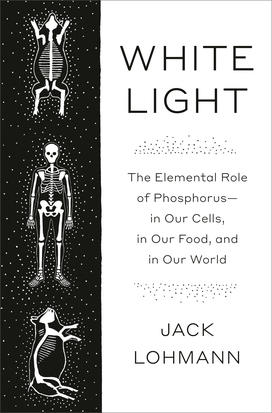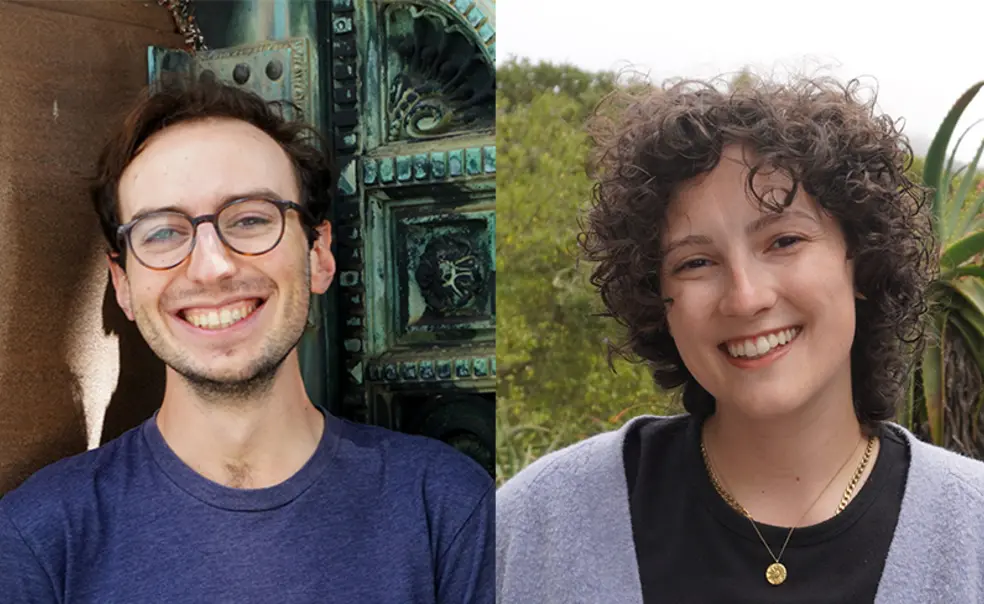Summer in South Pacific Led to Two Alums’ New Book on Phosphorous
Jack Lohmann ’19 wrote the new book White Light, and Alice Maiden ’19 created the illustrations with linocut prints

In the summer of 2018, Jack Lohmann ’19 pursued his undergraduate thesis research for the Princeton English department on the remote South Pacific island of Nauru. Encompassing only eight square miles, Nauru is the third-smallest country in the world. Lohmann found the island had been ravaged by the phosphate-mining industry, a legacy of environmental ruin that had led the cash-strapped nation to host a controversial immigration detention facility operated by Australia.
“I wanted to write about what happens to a place that’s reached the end of what people thought would happen there,” Lohmann says. “There’s been an apocalypse predicted, then that apocalypse occurs. What happens in the aftermath?”
That thesis research formed the kernel that expanded into his 2025 book, White Light: The Elemental Role of Phosphorus — in Our Cells, in Our Food, and in Our World. A vital ingredient in fertilizer, phosphorus plays a huge role in biology and modern agriculture, and Lohmann says the mineral’s many uses gave him a lot of narrative terrain to explore.
“It’s a way of talking about the human relationship to the earth in a very physical manner,” Lohmann says. From the discovery of phosphate rock in mid-19th-century England as a source of phosphorus to the mineral’s modern-day exploitation by mining companies in Florida, Lohmann uses the phosphorus theme to traverse stories far-flung in time and geographic distance.
If that description sounds a lot like the wheelhouse of Princeton writing professor John McPhee ’53, that’s probably because Lohmann took McPhee’s seminar in creative nonfiction. “John McPhee cares a huge amount about every word and every sentence,” Lohmann says, an example that informed his own approach. “I read drafts of [White Light] repeatedly for years, changing slight words for humor, or interest, or to fix the meaning in some way.”
Lohmann found a key collaborator on White Light in his classmate Alice Maiden ’19, a philosophy major whom he met on a summer 2017 Princeton journalism seminar in Greece. At Princeton, Maiden was an illustrator for the Nassau Weekly student magazine. “I always liked the project of illustration,” Maiden says, explaining that she enjoys taking someone else’s story and trying to “create an image that reflects the tone [and] meaning of that story.”
The following summer, when Lohmann was researching his thesis in Nauru, Maiden was working on her own thesis about climate refugees on the nearby island of Tarawa, the capital of the nation of Kiribati. After Lohmann finished his month in Nauru, he traveled to Tarawa to spend time with Maiden as they embarked on their respective projects. “Princeton provided the funding for it, and the encouragement and the feeling of safety,” Lohmann says. “We weren’t stressed about the logistics of anything. We were free to look for connections between very different ideas.”
Fast-forward several years, and as White Light neared completion, Lohmann asked Maiden to illustrate the book. To create her images of skeletons, habitats, and geologic formations, Maiden used linocut prints, a process that involves carving a design into a block of linoleum, coating that carved block with ink, and then using the block as a “stamp” to generate a print. To match her work to the themes of Lohmann’s chapters, Maiden relied on the distinct textures she could shape with the linocut carving tool. For images linked to chapters about the natural seasons of the earth, Maiden says she carved “smooth and organic shapes.” When it came to illustrating human interventions in the phosphorus cycle, Maiden carved “more harsh cuts to create empty space that’s been disrupted in a jarring way.”
Lohmann says the project couldn’t have happened without Princeton. “We had mentors who showed us how to spend a career looking at the world and trying to make sense of it.”












No responses yet